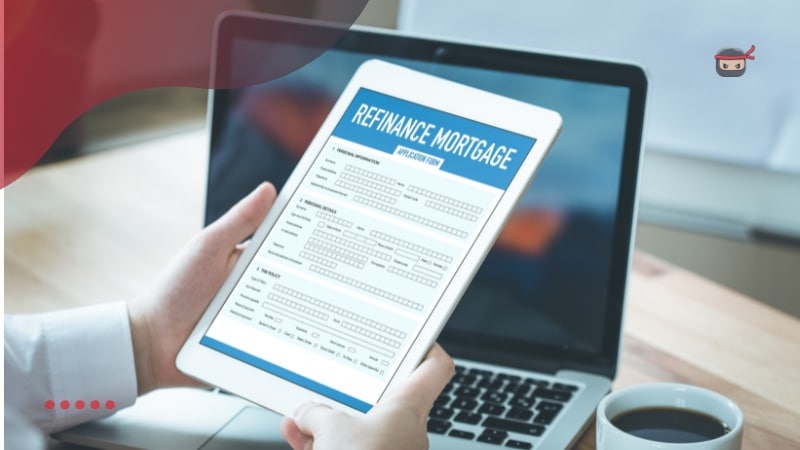How to refinance a mortgage is a common question among those who are considering saving on home financing or improving the conditions of the current contract.
Today learn all about how to refinance a mortgage, including how the process works, the types available, the costs involved and when it is worth following this decision.
Thus, you will know exactly how to refinance a mortgage, understanding all the steps and criteria that influence this choice. So, keep reading to find out if this is the best strategy for your financial reality.
What is a mortgage refinance?

Refinancing a mortgage is basically replacing your current mortgage with a new one. In practice, it is like exchanging a loan for another that usually offers better conditions, whether in rates, number of installments or amount paid monthly.
You can also refinance with specific objectives. For example, getting out of the mortgage insurance required by programs like the FHA or switching from an adjustable-rate contract to a fixed-rate one, which offers more stability.
Above all, before deciding, you must understand the main points of the process, from the costs involved to the deadlines and possible advantages. That’s what we’re going to do today, starting by understanding the functionality of refinancing, let’s go.
How does refinancing work?
At first, when you buy a house, you usually do so with the help of a mortgage. Banks accept this type of business, where they pay the full amount to the seller and the contractor (in this case you) pays the bank monthly with interest.
After all, why is understanding this important? The reason is that in refinancing practically the same thing happens. However, it is now exchanging its current funding for a new one.
In this way, instead of paying the old owner, the new lender pays off the balance of their current loan. So, it starts paying this new loan, with new conditions.
To do this, you must complete some steps. We will explain it in a very summarized way below.
It starts by making the request, then goes through the credit analysis and concludes everything by signing a new contract.
When to refinance a mortgage?
Generally speaking, it’s worth refinancing when interest rates are lower than when you bought your home.
In this scenario, refinancing can reduce the value of your monthly installments and save you money in the long run.
Still, it is important to do the math. If rates have gone up since you bought the property, the refinancing may not pay off, even with another goal in mind.
Mortgage rates vary with the market, this you do not control. However, your credit score did. If your score has improved since buying the house, you may be able to get more favorable conditions when refinancing. Now, if your score is low, we recommend that you apply the best ways to improve credit score.
How much does it cost to refinance a mortgage?
At first, the closing costs are between 2% and 6% of the balance you still owe.
For example, if the outstanding amount of your loan is $300,000, refinancing can cost anywhere from $6,000 to $18,000. These values vary, so it is worth researching and comparing proposals.
Also, pay attention to your mortgage contract. Some financing charges a penalty if you pay off the full amount before the deadline.
In short: refinancing can be good, but only if the costs don’t cancel out the benefits. So, before closing the deal, do the math calmly and always read the fine print.
Types of mortgage refinance
There are different forms of refinancing and each one makes the most sense depending on your financial situation. Let’s look at the main types:
- Rate and term refinancing: This is used to change the interest rate, the term of the loan, or both. It is a common option for those who want to save money at a lower rate. Available for example at U.S. Bank;
- Refinancing with withdrawal: basically uses the equity accumulated in the house to withdraw money. Mortgage debt increases, but you can use this amount for other purposes;
- Refinancing with cash inflow: Here, you make a cash payment to reduce the total amount of financing. Thus, it reduces debt;
- Refinancing of Closing Costs: This model allows you to refinance without paying upfront fees. These expenses are included in the new loan, which increases the amount financed and possibly the interest rate;
- Short refinancing: Suitable for those who are struggling to pay their mortgage. The new loan is less than the original amount, and the lender forgives the difference.
Each type has its advantages and limitations. Evaluate carefully and choose what best fits your goal.
Step by Step to Refinance a Mortgage

If you’ve decided it’s time to refinance, here’s the path to move forward safely and strategically:
- Define your goal: First of all, be clear about your goal. Do you want to reduce monthly payments? Shorten the term of the financing? Get out of FHA mortgage insurance?
- Research the best rates: Solicit proposals from at least three to five lenders. The first appointment may impact your credit score a little, but the others no longer harm your score. Comparing is essential to get the best conditions.
- Choose the right lender: Once you have received the proposals, carefully analyze the terms of the loan. Compare all the details before deciding.
- Close the loan: In the final step, you sign the papers and pay the closing costs previously reported.
Thus, it is clear that refinancing requires attention to detail, but with good planning, it can be an excellent choice to improve your financial life.
Conclusion
Based on everything we’ve explored about how to refinance a mortgage, it’s clear that refinancing can be excellent for those who need to improve their financial reality. to improve your financial health.
In principle, refinancing can reduce your installments, shorten the financing time, offer access to extra money or even eliminate mandatory insurance.
However, always look at costs, interest rates, and your own financial momentum before making a decision.
Thus, if your goal is to save or achieve more stability, it is worth following the step-by-step presented, comparing proposals, and choosing the type of refinancing that best aligns with your goals.

